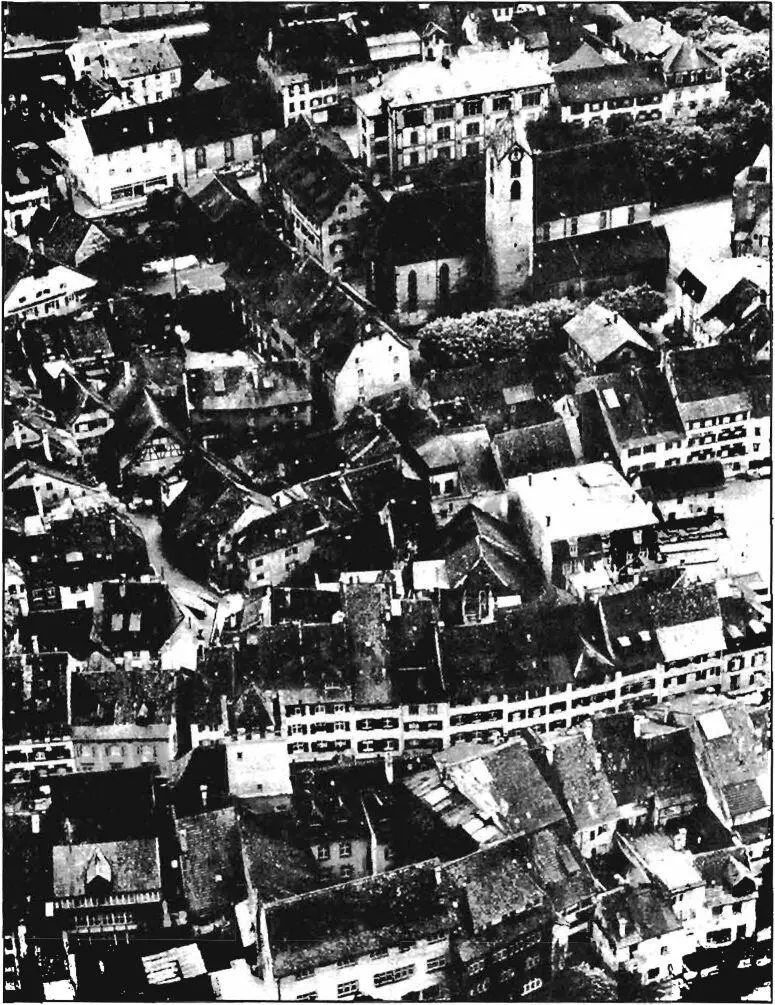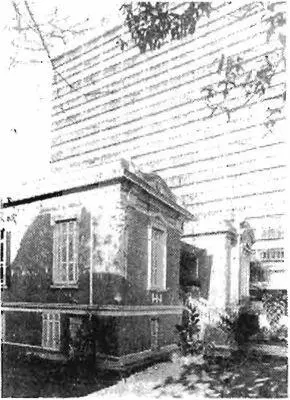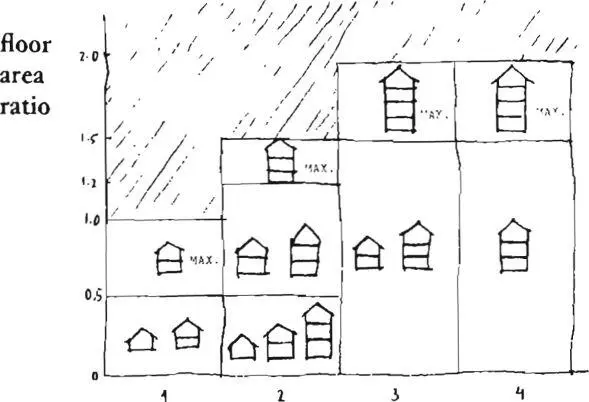Christopher alexander - A pattern language
Здесь есть возможность читать онлайн «Christopher alexander - A pattern language» весь текст электронной книги совершенно бесплатно (целиком полную версию без сокращений). В некоторых случаях можно слушать аудио, скачать через торрент в формате fb2 и присутствует краткое содержание. Жанр: Прочая научная литература, на английском языке. Описание произведения, (предисловие) а так же отзывы посетителей доступны на портале библиотеки ЛибКат.
- Название:A pattern language
- Автор:
- Жанр:
- Год:неизвестен
- ISBN:нет данных
- Рейтинг книги:3 / 5. Голосов: 1
-
Избранное:Добавить в избранное
- Отзывы:
-
Ваша оценка:
- 60
- 1
- 2
- 3
- 4
- 5
A pattern language: краткое содержание, описание и аннотация
Предлагаем к чтению аннотацию, описание, краткое содержание или предисловие (зависит от того, что написал сам автор книги «A pattern language»). Если вы не нашли необходимую информацию о книге — напишите в комментариях, мы постараемся отыскать её.
A pattern language — читать онлайн бесплатно полную книгу (весь текст) целиком
Ниже представлен текст книги, разбитый по страницам. Система сохранения места последней прочитанной страницы, позволяет с удобством читать онлайн бесплатно книгу «A pattern language», без необходимости каждый раз заново искать на чём Вы остановились. Поставьте закладку, и сможете в любой момент перейти на страницу, на которой закончили чтение.
Интервал:
Закладка:
and perhaps a part of an arcade ( i i 9) which connects to next door buildings.
Arrange the buildings in the complex to form realms of movement—circulation realms (98) ; build one building from the collection as a main building—the natural center of the site— main building (99) ; place individual buildings where the land is least beautiful, least healthy—site repair (104); and put them to the north of their respective open space to keep the gardens sunny—south-facing outdoors (105); subdivide them further, into narrow wings, no more than 25 or 30 feet across— wings of light (107). For details of construction, start with STRUCTURE FOLLOWS SOCIAL SPACES (205). . . .
| 96 NUMBER OF STORIES* |
|---|
 |
473
. . . assume now, that you know roughly how the parts of the building complex are to be articulated—building complex (95), and how large they are. Assume, also, that you have a site. In order to be sure that your building complex is workable within the limits of the site, you must decide how many stories its different parts will have. The height of each part must be constrained by the four-story limit (21). Beyond that, it depends on the area of your site, and the floor area which each part needs.
4*
Within the four-story height limit, just exactly how high should your buildings be?
To keep them small in scale, for human reasons, and to keep the costs down, they should be as low as possible. But to make the best use of land and to form a continuous fabric with surrounding buildings, they should perhaps be two or three or four stories instead of one. In this pattern we give rules for striking the balance.
Rule i: Set a four-story height limit on the site. This rule comes directly from four-story limit (21) and the reasons for establishing this limit are described there.
Rule 2: For any given site , do not let the ground area covered by buildings exceed 50 fer cent of the site. This rule requires that for any given site, where it belongs to a single household or a corporation, or whether it is a part of a larger site which contains several buildings, at least half of the site is left as open space. This is the limit of ground coverage within which reasonable site planning can take place. The rule therefore determines the maximum floor area that can be built with any given number of stories on a given site. The ratio of indoor area to site area (far—for floor area ratio) cannot thus exceed 0.5 in a single story building, i.O in a two story, 1.5 in a three story and 2.0 in a four story building.
If the total floor area you intend to build plus the built floor area that exists on the site is more than twice the area of the
474 9 6 NUMBER OF STORIES
site itself, then you are exceeding this limit. In this case, we advise that you cut back your program; build less space; perhaps build some of your project on another site.
 |
| Breaking the rule of thumb. |
Rule y Do not let the height of your building(s) vary too much from the 'predominant height of surrounding buildings . A rule of thumb: do not let your buildings deviate more than one story from surrounding buildings. On the whole, adjacent buildings should be roughly the same height.
I live in a small one-story garden cottage at the back of a large house in Berkeley. All around the cottage there are two-story houses, some as close as thirty feet. I thought when I moved in, that a garden cottage would be secluded and I would have some private outdoor space. But instead I feel that I’m living in a goldfish bowl— every one of the second-story windows around me looks right down into my living room, or into my garden. The garden outside is useless, and I don’t sit near the window.
Therefore:
First, decide how many square feet of built space you need, and divide by the area of the site to get the floor area ratio. Then choose the height of your buildings according to the floor area ratio and the height of the surrounding buildings from the following table. In no case build on more than 50 per cent of the land.
♦
BUILDINGS
 |
| height of surrounding buildings |
Once you have the number of stories and the area of each part clear, decide which building or which part of the building will be the main building (99). Vary the number of floors within the building—cascade of roofs (116). Place the buildings on the site, with special reverence for the land, and trees, and sun—site repair (104), south facing outdoors (105), tree places (171). In your calculations, remember that the effective area of the top story will be no more than three-quarters of the area of lower floors if it is in the roof, according to SHELTERING ROOF ( I I 7) .
If the density is so high all around, that it is quite impossible to leave 50 per cent of the site open (as might be true in central London or New York), then cover the ground floor completely, but devote at least 50 per cent of the upper floors to open gardens—roof garden ( i 18).
Give each story a different ceiling height—bottom story biggest, top story smallest—and vary the column spacings accordingly— final column distribution (21 3). The same building system applies, whether there are I, 2, 3 or 4 stories—structure follows social spaces (205). . , .
97 SHIELDED PARKING*
. . . many patterns we have given discourage dependence on the use of cars; we hope that these patterns will gradually get rid, altogether, of the need for large parking lots and parking structures—local transport areas (ii), nine per cent parking (22). However, in certain cases, unfortunately, large areas of parking are still necessary. Whenever this is so, this parking must be placed very early, to be sure that it does not destroy the buildinc complex (95) altogether.
❖ *
Large parking structures full of cars are inhuman and dead buildings—no one wants to see them or walk by them. At the same time, if you are driving, the entrance to a parking structure is essentially the main entrance to the building—and it needs to be visible.
In nine per cent parking (22), we have already defined an upper limit on the total amount of parking in a neighborhood. In small parking lots (103) we give the best size and the distribution of the lots when they are on the ground. But in certain cases it is still necessary to build larger parking lots or parking structures. The environment can tolerate these larger lots and structures, provided that they are built so that they do not pollute the land around them.
This is a simple biological principle. In the human body, for example, there are waste products; the waste products are part of the way the body works, and obviously they must have a place. But the stomach and colon are built in such a way as to shield the other internal organs from the poisons carried by the wastes.
The same is true in a city. At this moment in history the city requires a certain limited amount of parking; and for the time being there is no getting away from that. But the parking must be built in such a way that it is shielded—by shops, houses, hills of
Читать дальшеИнтервал:
Закладка:
Похожие книги на «A pattern language»
Представляем Вашему вниманию похожие книги на «A pattern language» списком для выбора. Мы отобрали схожую по названию и смыслу литературу в надежде предоставить читателям больше вариантов отыскать новые, интересные, ещё непрочитанные произведения.
Обсуждение, отзывы о книге «A pattern language» и просто собственные мнения читателей. Оставьте ваши комментарии, напишите, что Вы думаете о произведении, его смысле или главных героях. Укажите что конкретно понравилось, а что нет, и почему Вы так считаете.












